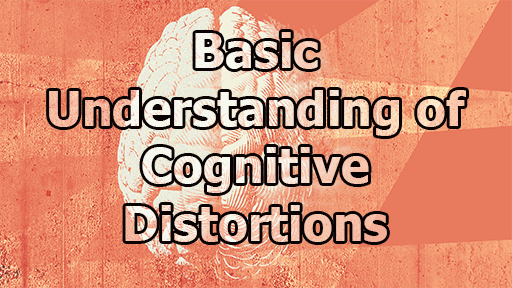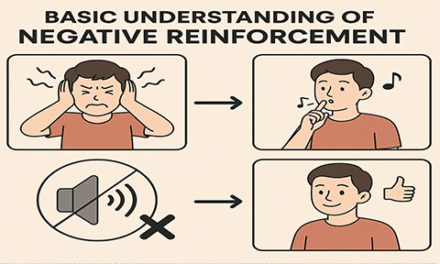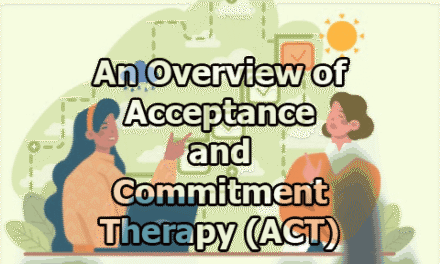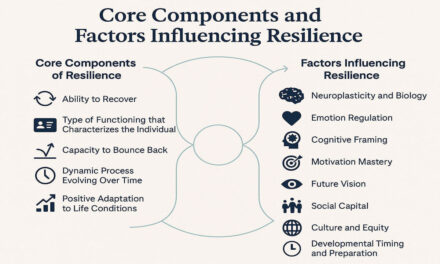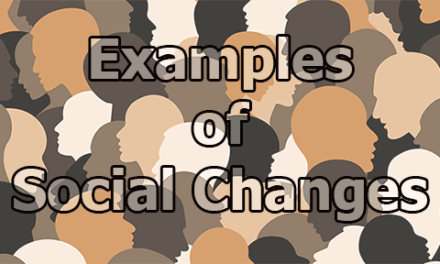Basic Understanding of Cognitive Distortions:
Cognitive distortions are irrational and biased ways of thinking that shape our perception of ourselves and the world. These thought patterns often develop subconsciously due to factors like past experiences, mental health conditions, and external influences. They can lead to negative emotions, anxiety, and low self-esteem, affecting relationships and decision-making (Sapmaz, 2023). Understanding these distortions and their impact is essential for improving mental well-being and fostering a healthier mindset. In the rest of this article, we will explore a basic understanding of cognitive distortions, including their definitions, the reasons why we experience distorted thinking, four key categories, the significant impact of thinking errors on mental health, the benefits of reducing thought distortions, and effective strategies to conquer them.
Definitions of Cognitive Distortions:
Some of the necessary definitions of the term Cognitive Distortions are given below:
Aaron T. Beck (1976) – The founder of cognitive therapy described cognitive distortions as “systematic errors in thinking that contribute to emotional distress and maladaptive behavior.” He emphasized that these distortions reinforce negative thoughts and contribute to psychological disorders such as depression and anxiety.
David D. Burns (1980) – In his book Feeling Good: The New Mood Therapy, Burns defined cognitive distortions as “exaggerated or irrational thought patterns that perpetuate negative emotions.” He categorized these distortions into specific types, such as all-or-nothing thinking, catastrophizing, and emotional reasoning.
Albert Ellis (1962) – The founder of Rational Emotive Behavior Therapy (REBT), viewed cognitive distortions as “irrational beliefs that lead to self-defeating behaviors and emotional distress.” He argued that challenging and replacing these beliefs with rational thinking is key to emotional well-being.
Judith Beck (1995) – Building on her father’s work, Judith Beck described cognitive distortions as “biased ways of thinking that reinforce negative automatic thoughts and maintain psychological disorders.” She emphasized the role of cognitive restructuring in therapy.
Paul Salkovskis (1996) – A cognitive-behavioral therapist, Salkovskis explained cognitive distortions as “distorted appraisals of situations and events that lead to excessive emotional responses and maladaptive coping strategies.”
Daniel Kahneman & Amos Tversky (1979) – While not specifically discussing cognitive distortions in the context of CBT, their work on cognitive biases, particularly in Prospect Theory, highlights how systematic errors in thinking affect decision-making and perception. Their research is foundational in understanding why people consistently misinterpret reality.
From the above definitions, we can say that cognitive distortions are systematic errors in thinking that lead to irrational beliefs, negative emotions, and maladaptive behaviors. These distortions, identified by researchers like Beck, Burns, and Ellis, contribute to psychological distress and are central to cognitive-behavioral therapy (CBT). Recognizing and challenging these faulty thought patterns is essential for improving mental well-being.
Reasons Why We Experience Distorted Thinking:
Cognitive distortions arise due to various factors, including evolutionary mechanisms, cognitive biases, mental health conditions, past experiences, and external influences (Hofmann et al., 2013). These distortions shape how we interpret the world around us and can have a significant impact on our emotional and mental well-being.
1. Survival Mechanisms: The human brain has evolved to prioritize survival, which means that it often reacts with negative thoughts such as fear and worry. These reactions were crucial for our ancestors, who needed to remain alert to potential dangers in their environment to avoid threats like predators and natural disasters (Hofmann et al., 2013).
A key player in this response is the amygdala, the brain’s emotional processing center. The amygdala quickly assesses threats and triggers survival responses such as the fight-or-flight mechanism. However, in modern life, this system often misfires. For example, an individual may experience overwhelming anxiety about public speaking or social interactions, even though these situations pose no real threat to survival. This overreaction of the amygdala results in cognitive distortions, where a minor or neutral situation is perceived as dangerous (Hofmann et al., 2013).
While this hyper-alert state was beneficial in prehistoric times, it can be maladaptive in today’s world, where actual life-threatening situations are far less frequent. The persistent activation of survival-based cognitive distortions contributes to stress, anxiety, and overgeneralized fears.
2. Negativity Bias: Another reason why cognitive distortions occur is the brain’s tendency to focus on negative information more than positive information. This phenomenon is known as the negativity bias (Hofmann et al., 2013). The brain naturally prioritizes negative experiences and threats over positive ones to enhance survival, but this bias can lead to distorted perceptions of reality.
Negativity bias affects how people:
- Interpret situations, often expecting the worst-case scenario.
- Remember events, as negative memories tend to be stronger and more vivid than positive ones.
- Experience emotions, since stressful or fearful situations have a greater emotional impact than neutral or joyful experiences.
This bias increases stress, fosters excessive worry about the future, and fuels pessimistic thinking. For example, someone who receives mostly positive feedback at work but focuses only on one critical comment may develop a distorted view of their performance. This selective attention to negativity reinforces cognitive distortions, such as catastrophizing or overgeneralization (Hofmann et al., 2013).
3. Mental Health Conditions and Trauma: Cognitive distortions are also linked to mental health conditions and neurological imbalances. Research suggests that an imbalance in neurotransmitters like dopamine and serotonin can contribute to distorted thinking patterns (Seo et al., 2008). When these chemical messengers are dysregulated, they can cause repetitive negative thoughts, increased anxiety, and depressive episodes.
For example:
- Low serotonin levels are associated with persistent negative thoughts, which can fuel cognitive distortions such as personalization (blaming oneself for external events) or emotional reasoning (believing emotions define reality) (Seo et al., 2008).
- Dopamine imbalances can contribute to overactive reward-seeking behaviors, leading to unrealistic expectations and black-and-white thinking, where situations are viewed in extremes with no middle ground.
Additionally, past trauma plays a crucial role in cognitive distortions. When individuals experience traumatic events, their brains form strong, emotionally charged memories. These memories can be easily triggered by present-day situations, leading to automatic negative thoughts and exaggerated emotional responses (Seo et al., 2008).
For instance, a person who experienced rejection in childhood may grow up believing that they are unworthy of love or success. As a result, they might engage in mind reading (assuming others have negative opinions about them) or fortune telling (predicting failure without evidence). These distorted thought patterns are deeply ingrained and often require therapeutic intervention to reframe.
4. External Influences: Modern society plays a significant role in reinforcing cognitive distortions. Social media, news, and digital content often emphasize negativity, heightening people’s fears and anxieties (Hofmann et al., 2013).
- The news cycle tends to prioritize sensationalized, fear-inducing stories over positive or neutral events. Constant exposure to distressing news can lead to catastrophic thinking and reinforce the belief that the world is a dangerous, unpredictable place.
- Social media promotes unrealistic comparisons, causing individuals to feel inadequate or unsuccessful. This leads to distortions such as disqualifying the positive (dismissing personal achievements) and should statements (setting rigid, unrealistic expectations based on societal pressures).
External influences shape how individuals perceive reality, often reinforcing negative beliefs and making cognitive distortions more persistent. This cycle of distorted thinking can contribute to stress, low self-esteem, and mental health struggles.
Four Categories of Cognitive Distortions:
There are multiple ways to categorize cognitive distortions, and understanding these categories can help individuals develop self-awareness and recognize faulty thinking patterns. Identifying these distortions is a critical step in cognitive-behavioral therapy (CBT) and can lead to healthier thought processes and emotional regulation. According to Barriga et al. (2001), cognitive distortions can be categorized into four main types: self-centered thinking, blaming others, minimization and mislabeling, and assuming the worst. Each category includes distinct thought patterns that can negatively impact mental well-being.
1. Self-Centered Thinking: Self-centered cognitive distortions involve extreme and rigid thought patterns, where individuals view themselves or situations in absolute terms with little flexibility. This category includes the following distortions:
1.1 All-or-Nothing Thinking (Black-and-White Thinking): All-or-nothing thinking occurs when individuals view situations in absolute extremes, with no room for middle ground. Things are perceived as entirely good or entirely bad, with no recognition of nuances (Hofmann et al., 2013).
Example: A person on a diet eats one unhealthy meal and then believes they have completely failed, leading them to abandon their diet altogether: “I cheated on my diet, so I might as well eat whatever I want for the rest of the week.”
1.2 Mind Reading (Jumping to Conclusions): Mind reading happens when individuals assume they know what others are thinking without any actual evidence. This cognitive distortion can lead to unnecessary anxiety and social misinterpretations (Hofmann et al., 2013).
Example: A person notices a stranger frowning and assumes the stranger dislikes them, even though the expression might have nothing to do with them.
1.3 Should Statements: “Should” statements involve rigid self-imposed rules or expectations that often lead to guilt, shame, or frustration when they are not met (Beck & Beck, 2011). These thoughts set unrealistic standards for oneself and others.
Example: “I should always be nice regardless of how I feel.” This kind of thinking can cause a person to suppress emotions or feel guilty for setting personal boundaries.
2. Blaming Others: Blaming others is the opposite of self-centered thinking. Instead of assuming personal responsibility, individuals with this distortion believe that others are always at fault when things go wrong.
2.1 Control Fallacies: Control fallacies manifest in two opposing ways:
- External control fallacy – The belief that one’s life is completely controlled by external forces, leading to a sense of helplessness and victimization (Beck & Beck, 2011).
- Example: “I have no control over my life; everything bad happens to me.”
- Internal control fallacy – The belief that one is responsible for everything that happens, including the feelings and actions of others. This can lead to excessive guilt and stress (Beck & Beck, 2011).
- Example: “It’s my fault my parents got divorced.”
Both types of control fallacies prevent individuals from adopting a balanced perspective on personal responsibility.
3. Minimization and Mislabeling: This category involves distorted perceptions of events where negative aspects are exaggerated while positive ones are dismissed or ignored.
3.1 Magnification and Minimization (The Binocular Trick): This distortion involves exaggerating negative experiences (magnification) or downplaying positive experiences (minimization) (Beck & Beck, 2011).
Example (Magnification): An athlete makes one mistake during a game and concludes, “I’m a terrible player,” despite their overall good performance.
Example (Minimization): A student wins an award but dismisses it by saying, “It wasn’t a big deal; anyone could have won.”
This cognitive distortion can severely impact self-esteem and motivation.
3.2 Labeling and Mislabeling: Labeling occurs when individuals make sweeping, negative judgments about themselves or others based on isolated incidents. Mislabeling takes this further by assigning overly emotional and inaccurate labels (Beck & Beck, 2011).
Example (Self-Labeling): A student fails one assignment and concludes, “I’m an idiot.”
Example (Labeling Others): A waiter receives a small tip and immediately labels the customer as “a stingy old miser.”
Labeling and mislabeling reinforce negative self-perception and judgmental attitudes, making it difficult to view situations objectively.
4. Assuming the Worst: Assuming the worst leads to chronic pessimism, anxiety, and depression. This category includes multiple cognitive distortions that make people expect negative outcomes even when evidence suggests otherwise (Barriga et al., 2001).
4.1 Overgeneralization: Overgeneralization occurs when individuals draw broad, negative conclusions from a single event or limited experience (Beck & Beck, 2011).
Example: A person gets rejected after one job interview and assumes, “I’ll never get hired anywhere.”
This distortion fosters learned helplessness and discourages individuals from trying again.
4.2 Emotional Reasoning: Emotional reasoning happens when individuals mistake their feelings for objective truth (Hofmann et al., 2013). Since emotions are often influenced by distorted thoughts, relying on them as evidence leads to irrational beliefs.
Example: “I feel like a failure, so I must be one.”
4.3 Mental Filtering: Mental filtering occurs when individuals focus only on negative details while ignoring positive aspects of a situation (Beck & Beck, 2011).
Example: After receiving mostly positive feedback on a presentation, a person dwells only on one minor critique, leading them to believe they did poorly.
4.4 Disqualifying the Positive: This distortion is similar to mental filtering but takes it a step further—positive experiences are actively rejected as unimportant or undeserved (Beck & Beck, 2011).
Example: A person receives a compliment but dismisses it by thinking, “They’re just being polite; they don’t really mean it.”
Over time, disqualifying the positive can lead to low self-esteem and lack of self-recognition.
4.5 Personalization: Personalization occurs when individuals take responsibility for events beyond their control, leading to unnecessary guilt or self-blame (Beck & Beck, 2011).
Example: A friend seems upset, and the person assumes, “It must be something I did.”
Example: A party doesn’t go as planned, and someone believes, “It’s my fault the event was a failure.”
This distortion can lead to excessive self-criticism and anxiety in social interactions.
Thinking Errors Significantly Impact Mental Health:
Cognitive distortions have a profoundly negative impact on emotional well-being (Durand, 2015). These irrational thought patterns distort reality and contribute to the development and persistence of mental health issues such as anxiety, depression, and stress-related disorders.
1. The Feedback Loop of Negative Thinking: Cognitive distortions create a self-reinforcing cycle of negativity that exacerbates emotional distress (Hofmann et al., 2013). When a person experiences a distorted thought, it triggers negative emotions such as fear, sadness, or anger. These emotions then reinforce the faulty thinking patterns, making them feel even more real.
For example, an individual who experiences anxiety may have thoughts like:
- “I feel anxious!”
- “I can feel my heart beating quickly. This must mean something is wrong.”
- “Because my heart is racing, I must be in danger.”
This cycle of anxious thinking amplifies physical symptoms (e.g., rapid heartbeat, shortness of breath) and further increases emotional distress, leading to heightened anxiety and panic (Hofmann et al., 2013).
2. Cognitive Distortions and Relationship Struggles: Thinking errors do not just affect the individual; they also create tension in relationships and contribute to feelings of isolation (Hofmann et al., 2013).
- Mind reading and personalization can cause misunderstandings and unnecessary conflict.
- Example: Someone assumes a friend is upset with them without any real evidence, leading to avoidance or defensiveness.
- Overgeneralization and labeling can create rigid and unfair judgments about others, damaging interpersonal trust.
- Example: A person has one argument with a coworker and concludes, “They are impossible to work with,” leading to long-term resentment.
These distortions make healthy communication and conflict resolution more difficult, pushing individuals into patterns of withdrawal, resentment, or hostility.
3. Workplace Challenges and Decreased Productivity: Thinking errors also negatively affect workplace performance and professional relationships (Hofmann et al., 2013). Individuals struggling with cognitive distortions may experience:
- Imposter syndrome (minimization and disqualifying the positive) – “I only got this promotion because no one else applied. I don’t really deserve it.”
- Perfectionism (should statements and all-or-nothing thinking) – “If I don’t complete this project perfectly, I have failed completely.”
- Fear of criticism (personalization and emotional reasoning) – “My boss didn’t compliment my work today, so I must be doing a terrible job.”
These distortions can increase stress, lower confidence, and reduce overall job satisfaction, making it harder for individuals to perform at their best.
Benefits of Reducing Thought Distortions:
Minimizing cognitive distortions can have a profoundly positive effect on various aspects of life, including relationships, workplace performance, emotional resilience, and overall well-being (Durand, 2015). By identifying and challenging faulty thinking patterns, individuals can enhance their mental clarity, build healthier connections, and cultivate greater happiness and psychological resilience (Fava, 2016).
1. Stronger and Healthier Relationships: Thought distortions often contribute to misunderstandings, unnecessary conflicts, and emotional distance in relationships. By reducing these distortions, individuals can:
- Improve Communication: Identifying and correcting cognitive errors such as mind reading (“They must be mad at me”) or personalization (“It’s my fault they’re upset”) allows for clearer and more effective communication (Durand, 2015).
- Foster Trust and Emotional Stability: Eliminating distortions like overgeneralization (“They always ignore me”) helps create more balanced and fair expectations in relationships.
- Reduce Unnecessary Guilt and Resentment: Letting go of “should” statements (“They should always support me in everything”) allows for more realistic and compassionate interactions.
2. Enhanced Productivity and Success at Work: Cognitive distortions can hinder professional growth and workplace success by creating self-doubt, stress, and fear of failure. Reducing these distortions helps individuals:
- Increase Confidence: Overcoming self-limiting beliefs such as disqualifying the positive (“I only did well because I got lucky”) fosters greater self-assurance and motivation (Fava, 2016).
- Improve Focus and Decision-Making: Reducing catastrophizing (“If I make one mistake, I’ll be fired”) helps professionals stay calm under pressure and make more rational choices (Durand, 2015).
- Enhance Resilience in Facing Challenges: Recognizing and correcting control fallacies (“I have no control over my success”) can empower individuals to take proactive steps toward career growth.
3. Boosted Motivation and Emotional Resilience: Reducing cognitive distortions strengthens mental resilience, making it easier to adapt to setbacks and maintain motivation. Benefits include:
- Greater Psychological Well-Being: Research shows that decreasing cognitive distortions correlates with higher levels of happiness and emotional stability (Fava, 2016).
- Stronger Coping Mechanisms: Correcting distortions like mental filtering (“Only bad things happen to me”) allows individuals to focus on both successes and challenges, creating a balanced perspective (Durand, 2015).
- Increased Motivation: Reframing negative thoughts helps develop a growth mindset, encouraging perseverance and goal-setting.
Effective Strategies to Conquer Cognitive Distortions:
Cognitive distortions are deeply ingrained thought patterns, but with consistent effort and guidance, they can be recognized, challenged, and changed. Cognitive Behavioral Therapy (CBT) offers a wide range of strategies that help individuals become aware of these distortions and replace them with healthier and more accurate thoughts. These strategies include identification, reframing, conceptualization, and cognitive restructuring (Curtiss et al., 2021).
1. Strategies to Identify Distortions: Since cognitive distortions are often automatic and subconscious, the first step toward overcoming them is to bring them into conscious awareness (Moreno et al., 2001). Several exercises help in recognizing these patterns:
- Journaling: Writing down thoughts, emotions, and experiences daily or after emotionally charged situations can help reveal patterns of negative self-talk. Once identified, clients can label these thoughts according to the types of distortions they represent, such as mind reading, catastrophizing, or all-or-nothing thinking (Curtiss et al., 2021).
- Feedback from Others: Often, we do not recognize how distorted our thinking is until we hear an outside perspective. Talking with trusted friends or therapists can expose biased patterns and provide alternative viewpoints, encouraging individuals to challenge their assumptions (Curtiss et al., 2021).
- Mindfulness: Mindfulness practices increase moment-to-moment awareness and help individuals recognize thoughts as they occur. Mindfulness allows clients to observe thoughts without judgment and label distortions in real-time, which is critical for interrupting automatic negative thoughts (Curtiss et al., 2021).
2. Reframing Cognitive Distortions: Reframing involves changing the meaning of a situation or thought by looking at it from a new perspective. Specific activities used in therapy include:
- Positive Spin Activity: In this activity, clients are asked to read or watch a story—often one with negative connotations—and then retell the story emphasizing positive elements, possible good outcomes, or positive intentions. This helps clients practice looking for the bright side and reduces their tendency to focus only on the negative (Curtiss et al., 2021).
- Questioning Assumptions: Many cognitive distortions are based on unexamined and irrational assumptions. Clients are encouraged to write down a common assumption they hold and then actively seek evidence for and against this belief. For example, if someone assumes, “I always fail at everything,” they are prompted to look for instances where they succeeded (Moreno et al., 2001).
- Challenging “Should” Statements: “Should” statements often bring about guilt and pressure, creating unnecessary mental burdens. Clients are guided to question the origin of these statements:
- Who says you should?
- Is this expectation flexible?
- Is this belief helping or harming you?
Replacing “should” with “I want to,” “I choose to,” or “I get to” can transform obligations into choices, reducing feelings of guilt and resentment (Curtiss et al., 2021).
3. Conceptual Framework for Cognitive Distortions: Moreno et al. (2001) suggested a conceptual framework that helps clients systematically identify and classify cognitive distortions. This model involves:
- Recognizing the Stimulus – Identifying the environment or situation that triggers the negative thought.
- Detecting the Duality – Understanding how the client perceives the situation in binary or extreme terms (good/bad, success/failure).
- Labeling the Distortion – Assigning the thought to a known distortion type (e.g., overgeneralization, personalization).
By using this structured approach, clients learn to break down real-life situations, identify distortions, and begin generating balanced alternatives (Moreno et al., 2001).
4. Cognitive Restructuring: Cognitive restructuring is at the heart of CBT and is considered one of the most powerful strategies for changing distorted thinking (Curtiss et al., 2021). The process involves:
- Self-Monitoring – Clients track their thoughts regularly and record situations, their automatic thoughts, and the associated feelings.
- Gathering Evidence – Clients then ask themselves, Is this thought based on facts or assumptions?
- Questioning Validity – They examine the thought critically, searching for counter-evidence and alternative interpretations.
- Generating Alternatives – Clients then practice replacing the distortion with a more balanced and constructive thought.
Over time, this strategy helps weaken distorted patterns and build healthier cognitive habits.
At the end of the day, we can say that recognizing and addressing cognitive distortions is key to overcoming negative thought patterns and improving emotional health. By identifying these distortions and using techniques like cognitive restructuring, mindfulness, and reframing, individuals can develop healthier perspectives and enhance their resilience. Changing the way we think empowers us to navigate challenges more effectively and cultivate a more positive and balanced approach to life.
Frequently Asked Questions (FAQs):
What are cognitive distortions?
Cognitive distortions are irrational, biased, and exaggerated thought patterns that negatively influence how we perceive ourselves and the world. These faulty thinking habits can contribute to stress, anxiety, and depression.
What causes cognitive distortions?
Cognitive distortions develop due to various factors, including:
- Evolutionary survival mechanisms (e.g., focusing on potential threats)
- Past experiences and trauma
- Cognitive biases (automatic patterns of thinking)
- Mental health conditions like anxiety and depression
- External influences such as social media and cultural beliefs
What are some common types of cognitive distortions?
Some common cognitive distortions include:
- All-or-nothing thinking (seeing situations in extremes)
- Overgeneralization (applying one experience to all situations)
- Mind reading (assuming you know what others think)
- Catastrophizing (expecting the worst to happen)
- Personalization (blaming yourself for things beyond your control)
Is overthinking a cognitive distortion?
Overthinking itself is not a cognitive distortion, but it often involves distorted thinking patterns such as catastrophizing, rumination, and mental filtering, which can lead to unnecessary stress and anxiety.
How do cognitive distortions impact mental health?
Cognitive distortions create a cycle of negative thoughts that fuel emotional distress, leading to issues such as:
- Increased anxiety and depression
- Lower self-esteem and confidence
- Strained relationships and communication problems
- Poor decision-making and problem-solving skills
How can I identify my cognitive distortions?
To recognize cognitive distortions, try:
- Journaling to track recurring negative thoughts
- Seeking feedback from trusted individuals
- Practicing mindfulness to observe thought patterns without judgment
- Asking yourself questions like: “Is this thought based on facts or assumptions?”
How can I overcome cognitive distortions?
You can reduce cognitive distortions by:
- Challenging negative thoughts with evidence
- Reframing situations in a more balanced way
- Using cognitive restructuring techniques from CBT
- Practicing mindfulness and self-compassion
- Seeking therapy if cognitive distortions significantly impact your life
Can cognitive distortions be permanently changed?
Yes, with consistent awareness and practice, cognitive distortions can be reduced or even eliminated. Techniques like cognitive-behavioral therapy (CBT), journaling, and positive reframing help rewire thought patterns over time.
Are cognitive distortions always bad?
While cognitive distortions can be harmful, they may have short-term benefits, such as helping us respond to danger quickly. However, when they become habitual, they negatively impact mental health and decision-making.
How can I help someone struggling with cognitive distortions?
You can support them by:
- Listening without judgment
- Encouraging self-reflection and positive self-talk
- Helping them reframe negative thoughts
- Suggesting professional help if needed
References:
- Barriga, A., Morrison, E., Albert, K., & Gibbs, J. (2001). Moral cognition: Explaining the gender difference in antisocial behavior. Merrill-Palmer Quarterly, 47(4), 532–562. https://doi.org/10.1353/mpq.2001.0020
- Beck, A. T. (1976). Cognitive therapies and emotional disorders. New American Library.
- Beck, J. S. (1995). Cognitive therapy: Basics and beyond. The Guilford Press.
- Beck, J. S., & Beck, A. T. (2011). Cognitive therapy: Basics and beyond. Guilford Press.
- Burns, D. D. (1980). Feeling good: The new mood therapy. William Morrow and Company.
- Curtiss, J., Levine, D., Ander, I., & Baker, A. (2021). Cognitive behavioral treatments for anxiety and stress related disorders. American Psychiatric Publication, 19(2), 184–189. https://doi.org/10.1176/appi.focus.20200045
- Durand, M. (2015). The OECD Better Life Initiative: How’s Life? And the Measurement of Well-Being. Review of Income and Wealth, 61, 4-17. https://doi.org/10.1111/roiw.12156
- Ellis, A. (1962). Reason and emotion in psychotherapy. Lyle Stuart.
- Fava, G. A. (2016). Well-being therapy: Current indications and emerging perspectives. Psychotherapy and Psychosomatics, 85(3), 136–145. https://doi.org/10.1159/000444114
- Hofmann, S., Asmundson, G., & Beck, A. (2013). The science of cognitive therapy. Behavioral Therapy, 44(2), 199–212. https://doi.org/10.1016/j.beth.2009.01.007
- Kahneman, D., & Tversky, A. (1979). Prospect theory: An analysis of decision making under risk. Econometrica, 47, 263-291. http://dx.doi.org/10.2307/1914185
- Moreno, P., Francisco, M., & Sanchez, J. (2001). Effectiveness of cognitive behavioral treatment in social phobia: A meta-analytic review. Psychology in Spain, 5, 17–25.
- Salkovskis, P. M. (Ed.). (1996). Frontiers of cognitive therapy. The Guilford Press.
- Sapmaz, F. (2023). Relationships between cognitive distortions and adolescent well-being: The mediating role of psychological resilience and moderating role of gender. International Journal of Psychology and Educational Studies, 10(1), 83–97. https://doi.org/10.52380/ijpes.2023.10.1.866
- Seo, D., Patrick, C., & Kennealy, P. (2008). Role of serotonin and dopamine system interactions in the neurobiology of impulsive aggression and its comorbidity with other clinical disorders. Aggression and Violent Behavior, 13(5), 383–395. https://doi.org/10.1016/j.avb.2008.06.003

Library Lecturer at Nurul Amin Degree College

